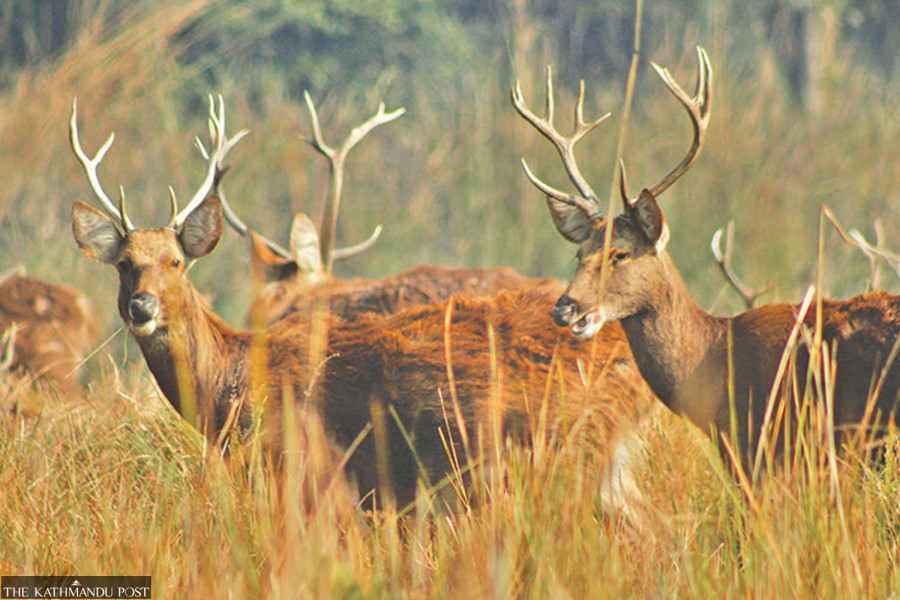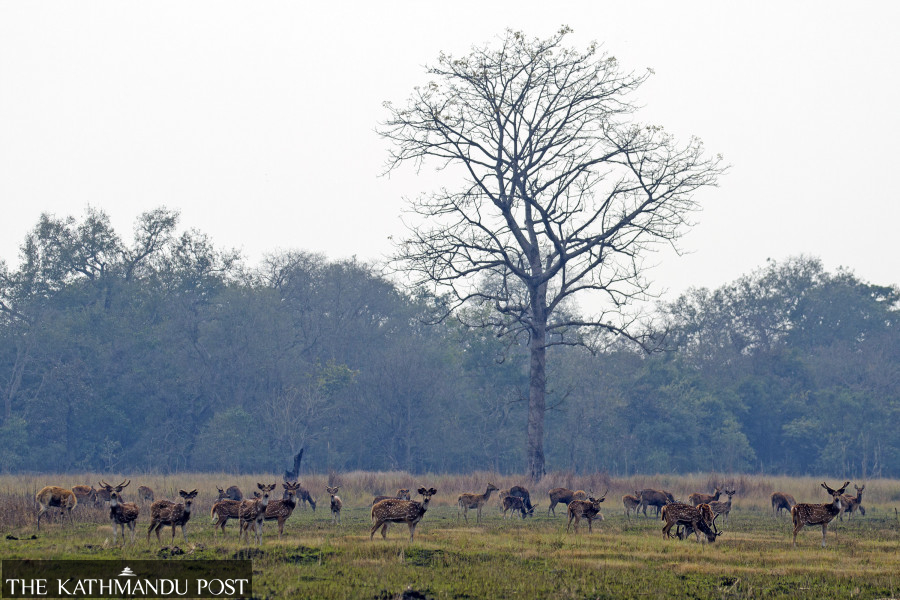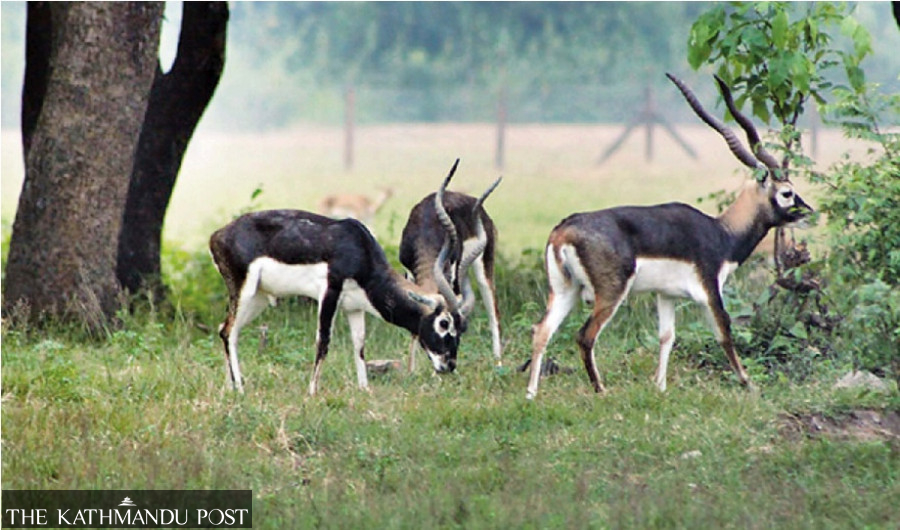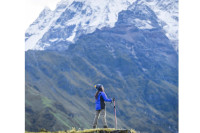Travel
Shuklaphanta National Park beckons wildlife enthusiasts
Besides swamp deer, the park is also home to tigers, blue bulls (Boselaphus tragocamelus) and peacocks, among others.
Bhawani Bhatta
Shuklaphanta National Park, which is home to swamp deers, is a major tourist attraction in the Far West region of Nepal.
Shuklaphanta National Park was initially a hunting reserve in 1969.
Despite being the smallest national park among those in the Tarai region of the country, it has a distinct identity and plays an important role in wildlife conservation.
The huge grasslands offer suitable habitats for swamp deers which can be seen in abundance in the park.
Of the 305 square kilometres area of the park, the grasslands occupy 55 square kilometres.
According to a recently conducted census, the park is home to 2,314 swamp deer, of which 858 are adult females and 262 adult males. The population of swamp deer has remained stable since 2014.

Many towers, as high as three-storey, have been built for visitors to watch the swamp deer.
However, according to the park’s data, only around 3,000 tourists visit the park annually.
The grasslands where the national park’s wildlife can be spotted are located 18 kilometres southwest of Majgaun, the entry gate of the national park. Visitors can take a jeep to reach there.
Besides swamp deer, the park is also home to tigers, blue bulls (Boselaphus tragocamelus) and peacocks, among others.
According to the recent tiger census, the park has 36 tigers. There were 19 tigers in the park four years ago.
Moreover, the park has become famous among wildlife enthusiasts to study rhinoceroses in recent years. Four years ago, five rhinos were translocated to Shuklaphanta from Chitwan National Park. A census conducted two years ago had shown 16 rhinoceroses in the park.
The park already had 10 rhinos before the five joined from Chitwan.

Blackbucks are another attraction in the national park. The Hirapur area of the park has been set aside for the conservation of blackbucks, whose number stands at 203. Forty-two blackbucks were brought to the park from Banke and Bardiya districts between 2012 and 2015.
Besides the grasslands, the park also has Sal forest, wetland areas and around half-a-dozen lakes. The park is also considered a major destination for bird watchers as 450 species of birds can be found in the park.
It is also home to 56 species of mammals.
After an hour-long flight from Kathmandu to Dhangadhi, another 50 km drive takes you to Mahendranagar. Travelling on the road from Kathmandu to Mahendranagar takes 18 to 22 hours.
Auto rickshaws or other vehicles can be taken to reach the park’s gate from Mahendranagar. The mornings and evenings are believed to be the best time to visit the park.




 9.12°C Kathmandu
9.12°C Kathmandu










